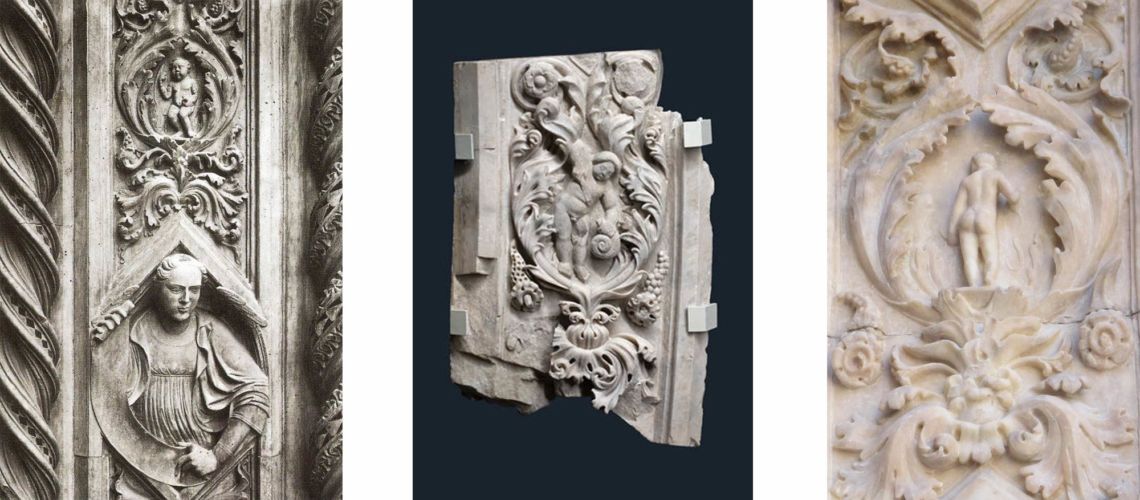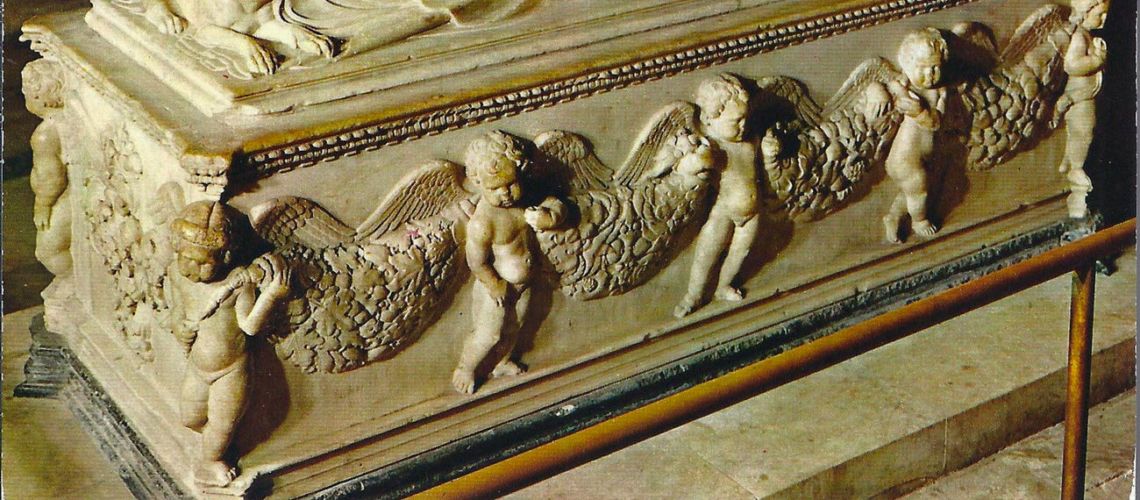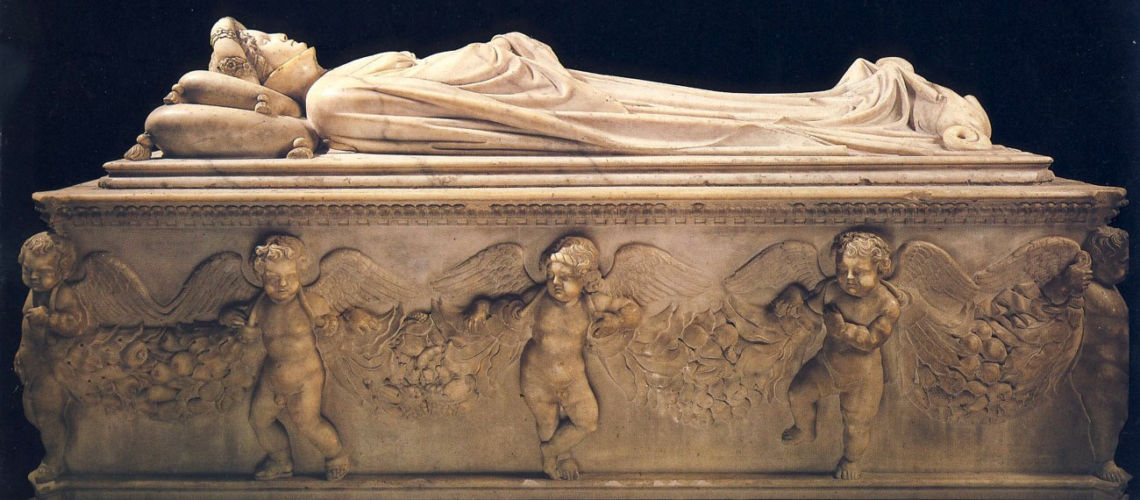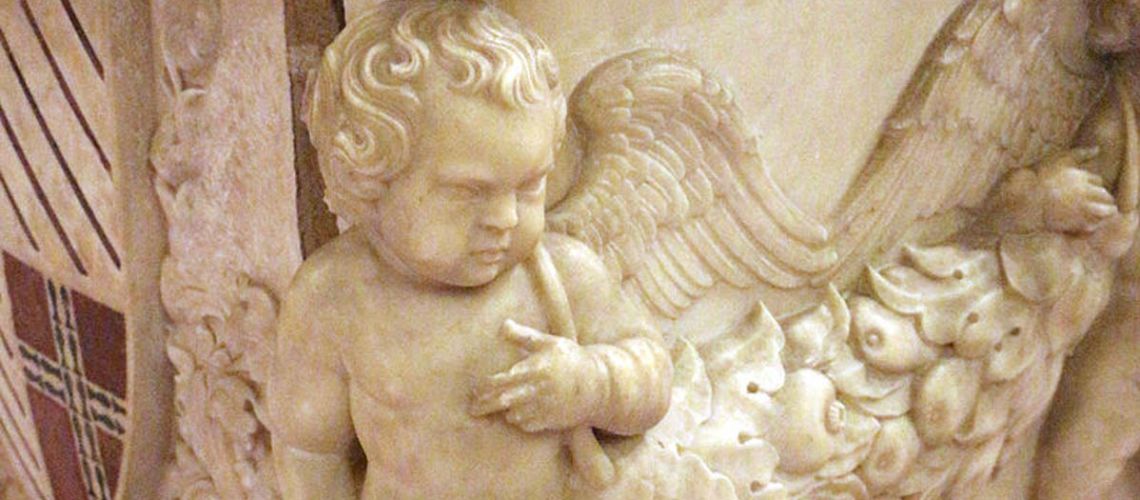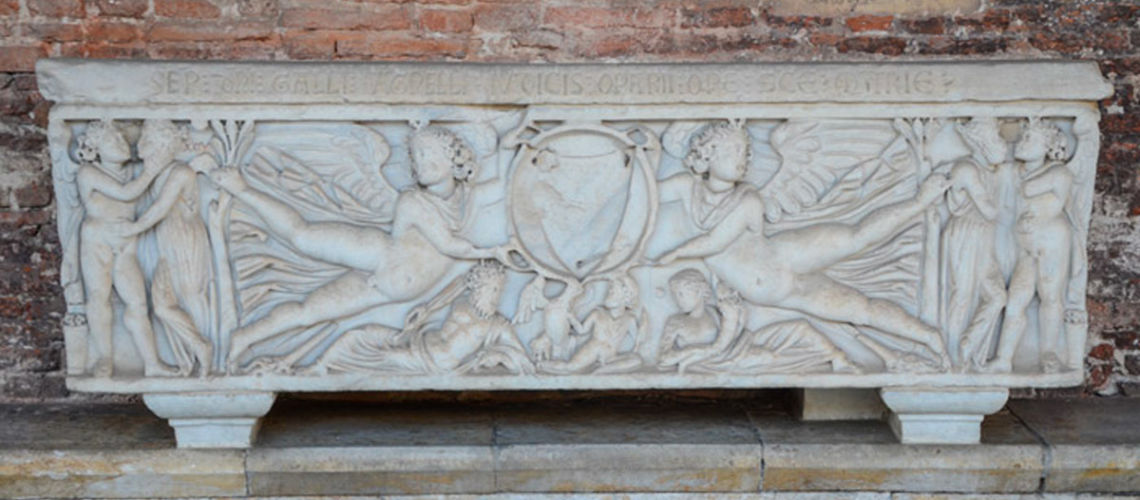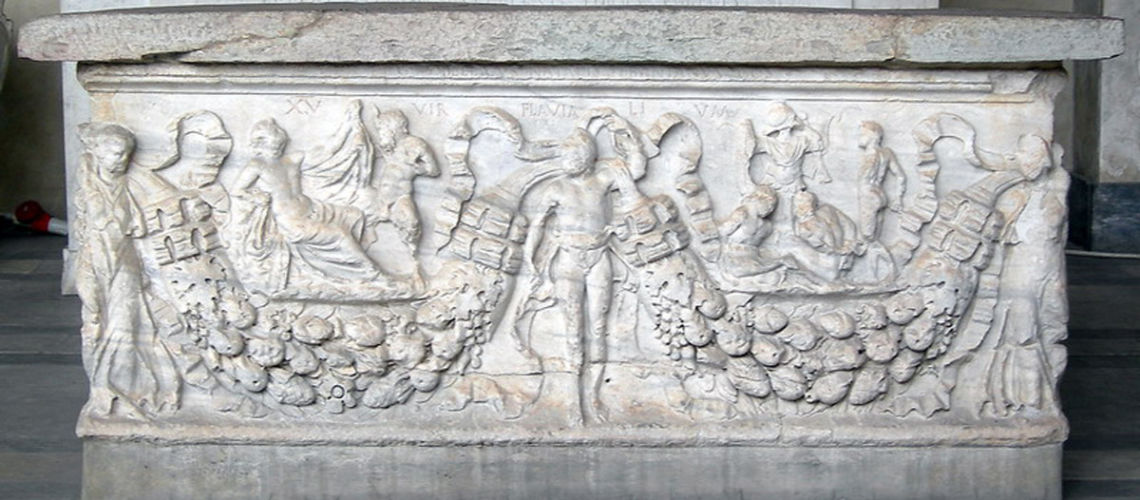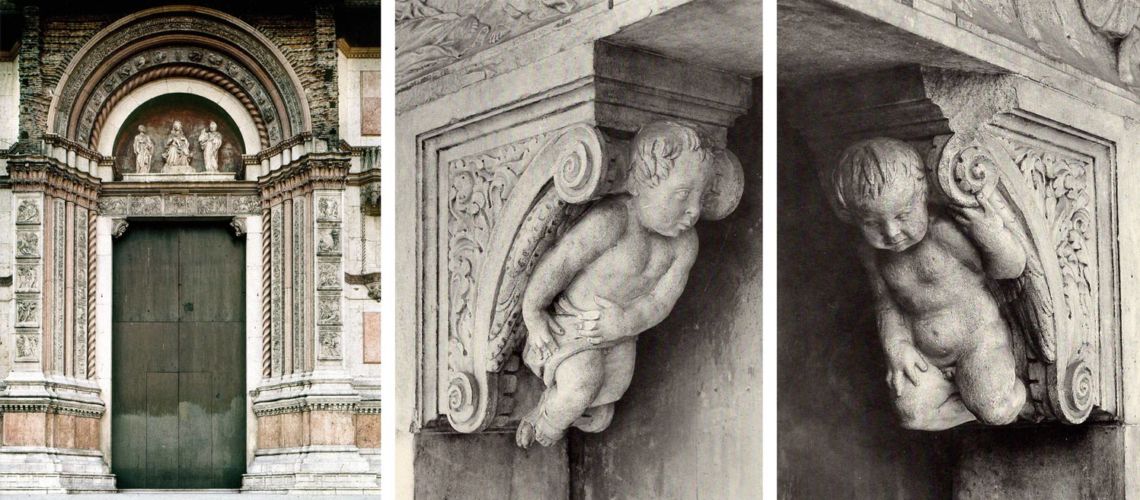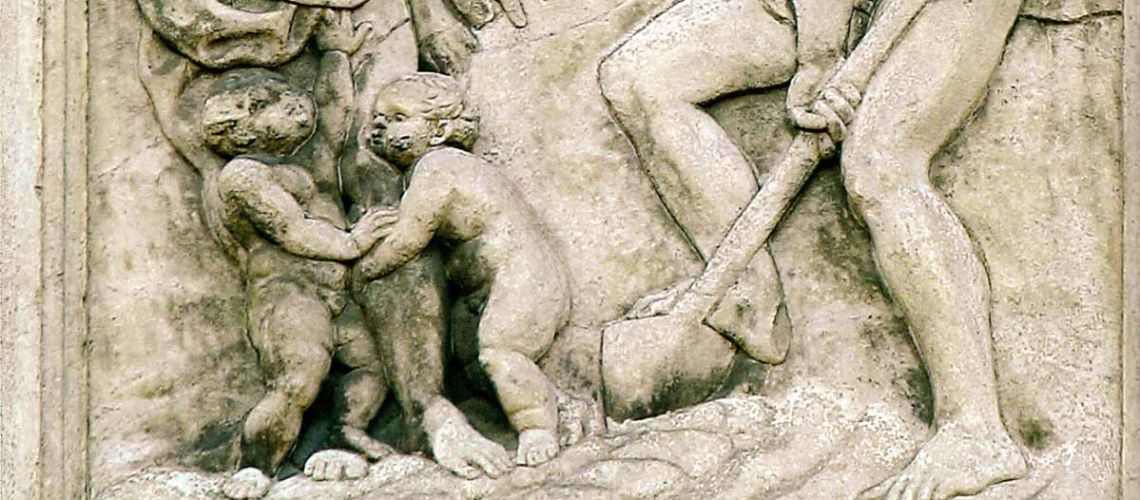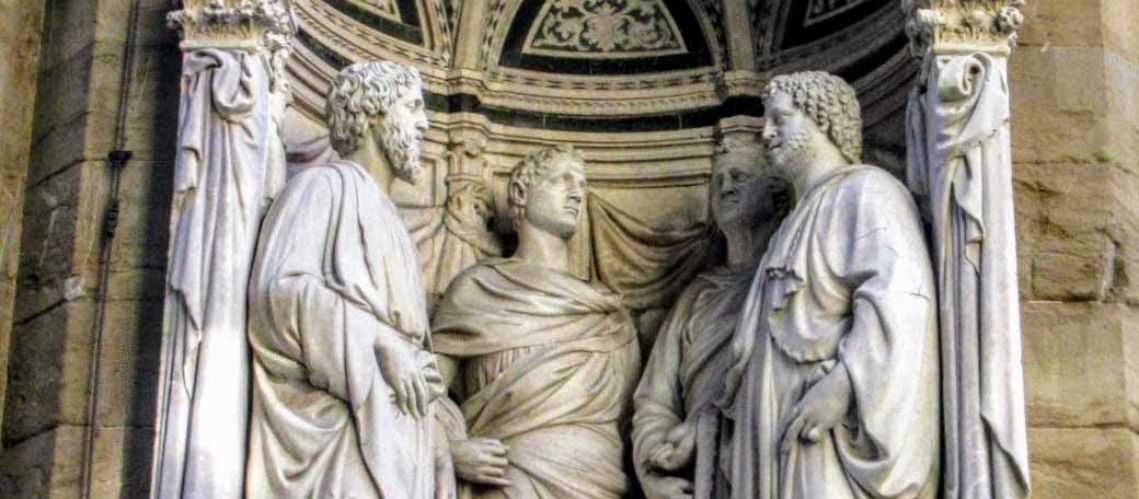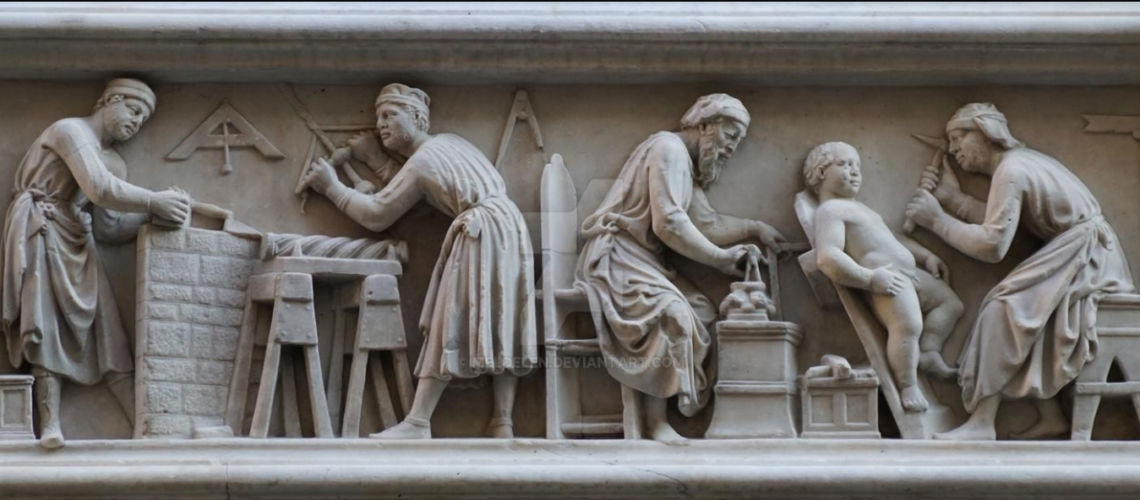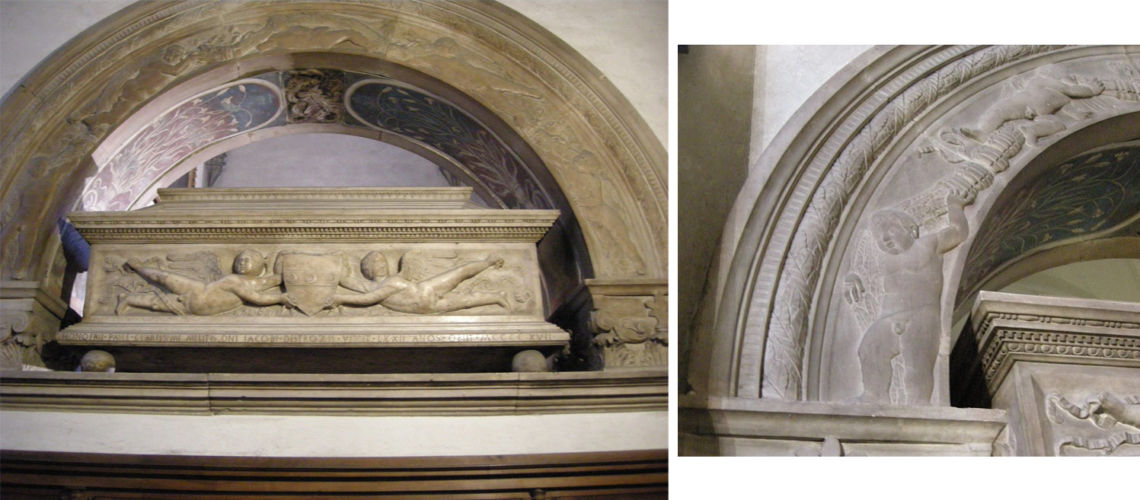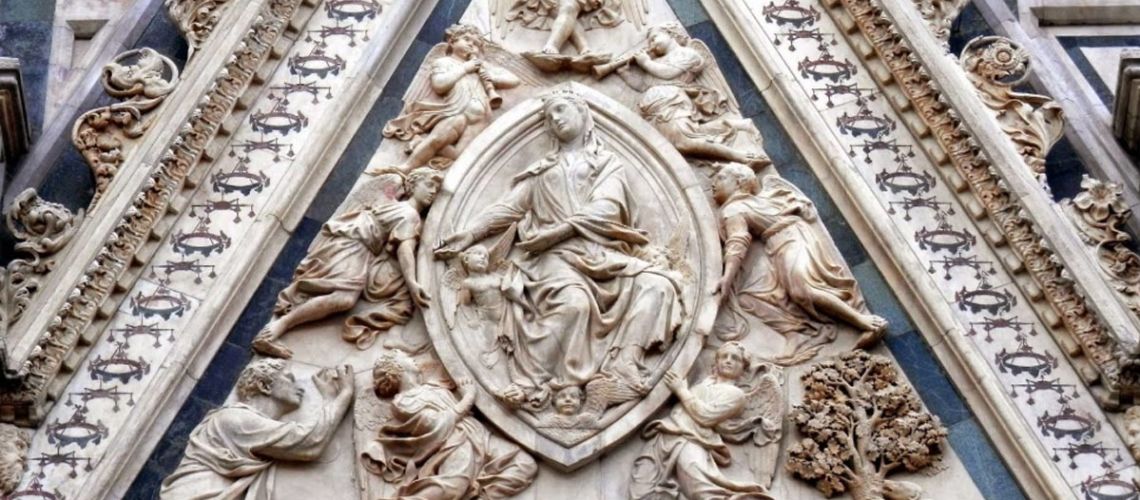Donatello and the putto in the sculpture - Part II
The Renaissance
On the left side of the Cathedral of Florence (Santa Maria del Fiore) there is the Almond Gate, executed in three phases: 1391-1397, 1404 -1409, 1414 -1422. Without going into the list of the artists who worked on it, it is enough to note that in the side friezes there are classical cherubs, some more clumsy, others more evolved. They are among the first “germs” of the rediscovery of the Eros-Love putto.
The first real appearance of putti in ancient style is owed to Jacopo della Quercia (with the probable help of Francesco da Valdambrino) in the tomb that he executed in 1406 for Ilaria del Carretto, wife of Paolo Guinigi lord of Lucca, placed in the Cathedral of the city. It is a sarcophagus still of medieval flavor, with the deceased on the lid. But the sarcophagus is surrounded by a series of classic winged putti, each in a different pose, which hold the classic fruit garlands around their necks. Even if they have funerary meaning, Jacopo for the first time recreates, on a classical Roman model, the one that with Donatello will be the Renaissance putto.
It is very likely that Jacopo was inspired by the various Roman sarcophagi and fragments of sculpture found in Pisa, some of which are decorated with putti,
others with garlands like that of Caius Bellicus Natalis Tabanianus of the Pisa Monumental Cemetery.
Jacopo also sculpted, between 1425 and 1438, two winged putti of classical forms inserted in two shelves of the Porta Magna of the church of San Petronio in Bologna,
and likewise two cherubs of classical taste in the bas-relief of Adam and Eve, representing Cain and Abel.
Another interesting example is found in the predella of the four sculptures of one of the niches of the church of Orsanmichele in Florence: the Santi Quattro Coronati by Nanni di Banco executed from 1411 to 1413: a marble sculpture workshop is represented in bas-relief; on the right, one is curiously performing a classic but very large putto, when in reality the sculpture of a large nude had never been performed yet; it will be no earlier than about 1440, the year in which Donatello performs the Attis and his David.
In the sacristy of the church of Santa Trinita in Florence, the tomb of Onofrio Strozzi consists of an arch that overlooks the sarcophagus; the arch is decorated with putti that climb on a garland in a bas-relief, whose style is very similar to that of Donatello. On the sarcophagus there are two ungainly and ugly putti that support a coat of arms, in the ancient Roman style. Probably it is to these that the document that attributes to Piero di Niccolò Lamberti the work, executed in 1418, refers to, while the arc was probably executed later by the workshop of Donatello.
Between 1415 and 1421, the year of his death, Nanni di banco worked on the execution of the high-reliefs of the upper part of the Porta della Mandorla of the Florentine Cathedral. The Madonna contained in the “almond” is surrounded by 6 winged putti who are dressed as angels, three of them musicians; they are more grown up than classic cherubs. Inside the almond, on the sides of the Madonna, two others appear, younger, and a winged putto head (a Serafino) also appears under his feet. It is a hybrid: dressed angels, with the typology and shape of classical Roman putti that surely influenced Donatello who already knew the classic ones seen in his travels to Rome with Filippo Brunelleschi.

